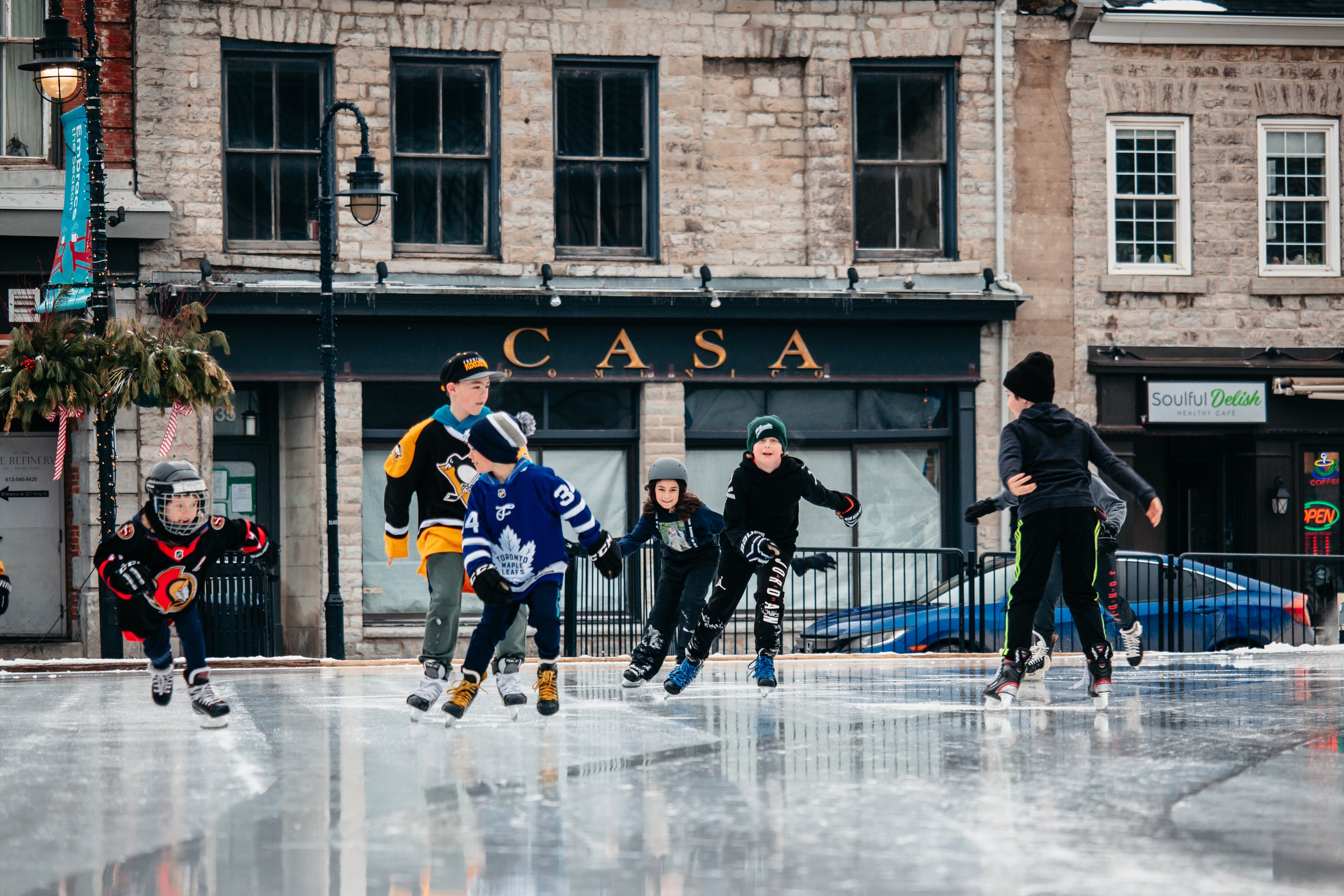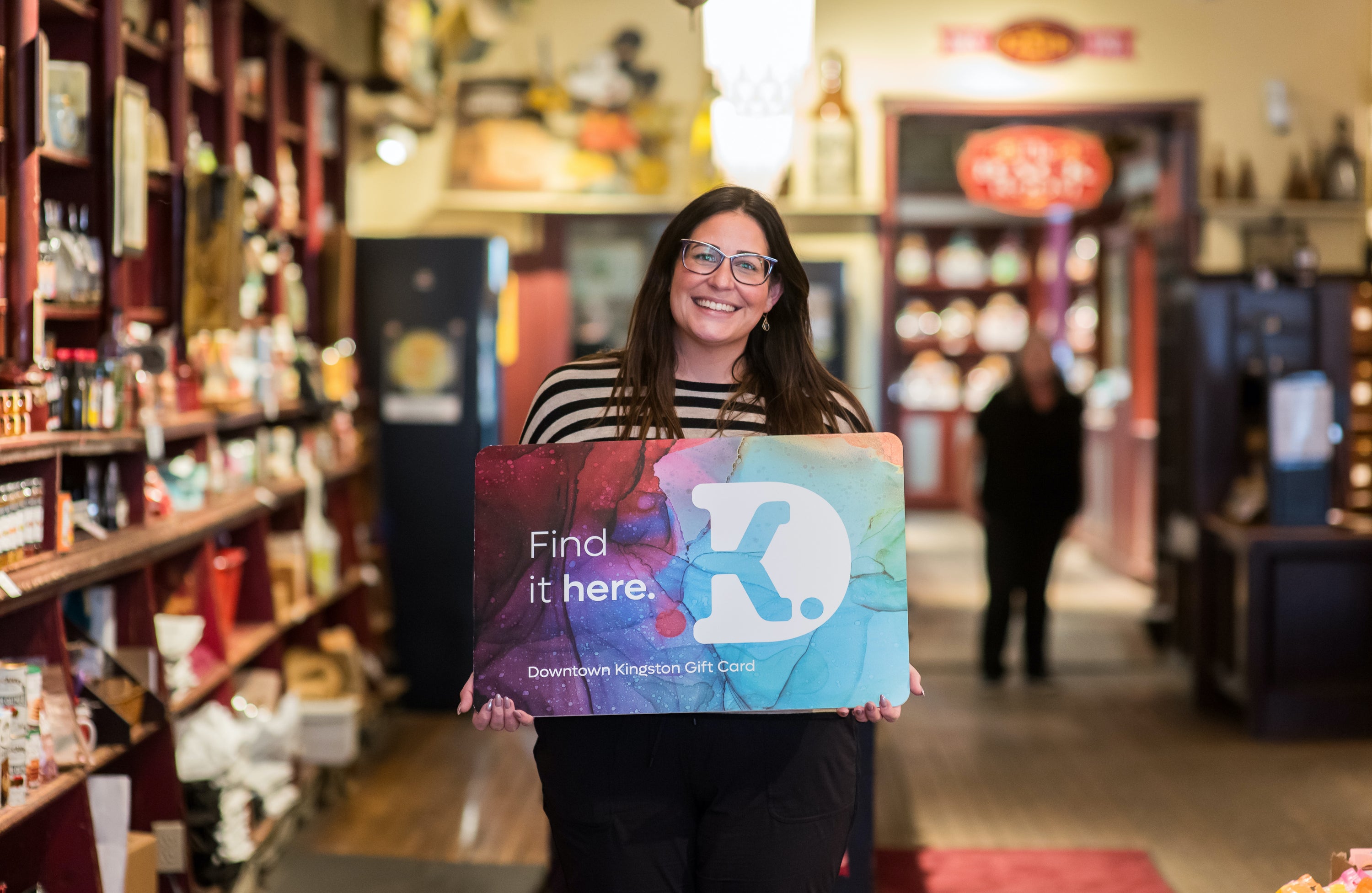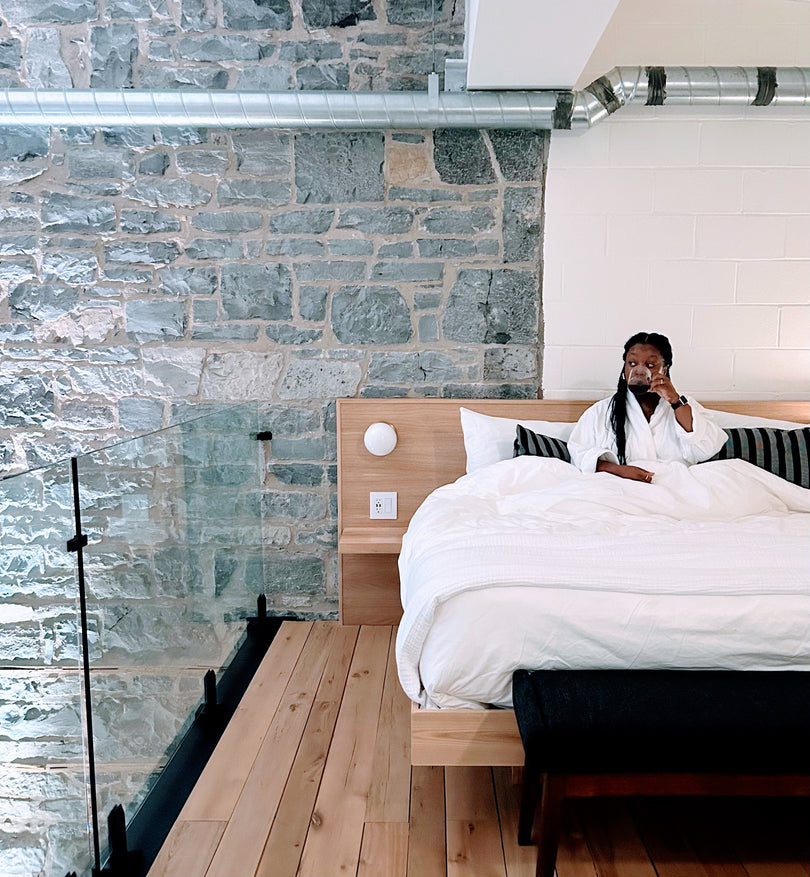Spring Cleaning with 5 Refillery Ingredients
By Ange Buck
Tried and true recipes and tips that ensure a low waste, low impact beautful spring clean!
Yesterday it felt like spring. Sunshine, fresh spikes of grass pushing up, birds singin' away, and people strolling downtown. The anticipation was amazing; it's been a long winter! Spring cleaning is one of those things that I actually don't mind; once spring comes the feeling of freshness, bright air and energy propels me through this task (mostly).
For this edition of the Downtown Dish, I’ve compiled all of the recipes for Harlowe Green’s refillery cleaners for anyone hoping to switch to DIY, refill, and leave the plastic and chemical-based detergents and solvents behind.
Over the last couple of years, I've had some customers come into the shop and ask for pre-mixed cleaners, refillery-style. Things like window cleaner or bathroom cleaners - things that have a lot of water mixed in with them and are potentially not very effective. Once we get into adding water where we can really just add it at home ourselves, it increases the plastic involved (to contain and move that water), the need for preservatives (to ensure freshness of a water-based product), and the carbon footprint of an item (because pulling water at the production site to make these premixed solutions and then shipping it around is heavy and costly in terms of fossil fuels utilized and the impact). Sure, we need to do this for some of our refillery goods like shampoos and liquid laundry detergents, but when it comes to cleaners, there's a few other reasons why we don't have that type of premixed situation available, too.
Truth be told, I've just not had a lot of luck with pre-mixed natural cleaners, and they tended to be mostly water, which I could just pour in there myself. I couldn't adjust a premixed cleaner and they usually were "supposed" to be for one type of cleaning task or area of the home. It would be impossible to fully list the amount of "green" cleaners I bought that were ineffective when it came to their quality of clean, and then they just became more waste as I went back to the blue goo cleaners of my childhood. I found I was frustrated with the whole cycle of spending and getting nothing much in return. Often, they were a "special line" by a cleaning company that just made a similar formula with a few exchanges on the ingredients and added a little splash of green or a leaf to the bottle. The overall business model wasn't something I supported, and after several sad findings that these brands still had ridiculous ingredients in there (and were leaning their marketing hard on their few good ingredients/choices), I was done with pre-packaged.
The terrible thing is, I was not alone in this frustrating situation. Last year I polled our audience and more than 68% had this same thing happen when they tried to work on simplifying and decreasing waste in this area of their lives.
It was time to go back to basics. I had to learn things that my grandparents did that were second nature for them, and reclaim a bit of self sufficiency and know-how. I realized a full-length closet wasn’t necessary to house all of my colourful plastic cleaning bottles as it seems is normal in these modern times of excess; I just a few ways to use each item and mix up my own ingredients were all that was needed. Luckily, there are a few modern options that can be added or worked with to make it just that much better. And so began the stage of finding base ingredients and finding something that actually worked - and here it all is in a longish blog post to help you see how you can add just a few ingredients and do a whole lot.
The Weekly Cleaning Crew: all you need is 3
Here's my list for our home to ensure we are using products that are approved by the Environmental Working Group, a third-party, research-based organization that ranks products and ingredients for their health and environmental impacts. I also use products that I could refill in order to remove the single-use plastic waste. I use rags and “spent” dish brushes, tooth brushes and sponge cloths for cleaning with and selected spray bottles I really liked to upcycle for my recipes to decrease my waste in the cleaning area further; you can read more about how to decrease paper products and upcycle in some of our other blog posts HERE.
1. Bathroom Spray/Heavy Duty Cleaning Spray
In a spray bottle, mix 1 part Sal's Suds, 1 part cleaning vinegar (I used infused cleaning vinegar if I have it to ease the vinegar scent), 2-3 parts water
This cleaning spray cleans my whole washroom: I walk in and spray the shower down, the sink, the toilet and inside the toilet bowl. I then get to wiping it down with a cloth rag, and you can add water to your cloth as needed during the wiping process. The Sal's Suds was the missing ingredient in a lot of basic bathroom cleaners I had tried; it is technically a 'detergent' so it really foams up and degreases as you go. Inside the toilet, I use a wood and sisal toilet brush by first wetting it in the toilet water and then scrubbing the bowl where the cleaner has been sprayed and allowed to sit while I clean the rest of the washroom. This is much more effective than any toilet bombs or citric acid/vinegar solutions I tried in the toilet bowl, because the liquid can run down the sides of the bowl and get foamy when I add the toilet brush with water on it. With sharing this recipe over time, I learned that depending on the person’s application (their level of water hardness, their size of bathroom, type of tile, etc.) that this spray can be adjusted with more Sal’s, vinegar, or water, depending on your preference.
2. Glass + Surface Spray/All Purpose Spray
In a spray bottle, mix 1 part Sal's Suds, 1 part cleaning vinegar (I used infused cleaning vinegar if I have it to ease the vinegar scent), 2-3 parts water
This cleaning spray cleans my whole washroom: I walk in and spray the shower down, the sink, the toilet and inside the toilet bowl. I then get to wiping it down with a cloth rag, and you can add water to your cloth as needed during the wiping process. The Sal's Suds was the missing ingredient in a lot of basic bathroom cleaners I had tried; it is technically a 'detergent' so it really foams up and degreases as you go. Inside the toilet, I use a wood and sisal toilet brush by first wetting it in the toilet water and then scrubbing the bowl where the cleaner has been sprayed and allowed to sit while I clean the rest of the washroom. This is much more effective than any toilet bombs or citric acid/vinegar solutions I tried in the toilet bowl, because the liquid can run down the sides of the bowl and get foamy when I add the toilet brush with water on it. With sharing this recipe over time, I learned that depending on the person’s application (their level of water hardness, their size of bathroom, type of tile, etc.) that this spray can be adjusted with more Sal’s, vinegar, or water, depending on your preference.
3. Wood Spray
In a 500mL spray bottle, mix about 1/2 cup cleaning vinegar (lemon infused works so well), 1-2 Tbsp olive oil, 10 drops of orange or lemon essential oil, 1 cup water
We have a lot of wood in our home and this spray adds a bit of life to the wood that the vinegar spray does not in order to protect it and nourish it. Using a lemon infused vinegar works so well for creating a lemony, nourishing spray.
The Spring Cleaning Edition: double duty on the same ingredients + add a few basics
We also have a few other recipes/routines that we use during the spring to fully clear things out. This includes the washing machine, dishwasher, fridge, mattresses, furniture, rugs, and wiping down walls and the insides of drawers/furniture.
On top of the vinegar and Sal's that make up the majority of the cleaners we noted above, our family's cleaning for the whole home (and beyond) includes a bottle of Castile soap (eucalyptus is my fave), baking soda, and oxygen bleach/whitener.
The Sal's or Castile Soap Bucket
We use Sal's for quite a lot of things in our spring clean, as it tends to be the time we want a bit more of a heavy duty wash down. You can use Castile in the place of Sals' if you'd prefer more of a gentler clean. The difference between the two is that Castile is a vegetable based soap, and Sal’s is a man-made biodegradable detergent, so it is more of a heavy hand or degreaser in your applications. Either option can be added to a bucket of water (just add a squirt of the soap and fill) and that can clean almost every surface. If you prefer a spray option instead of the bucket, you can use the heavy duty spray recipe we noted above or just a bit of Sal's or Castile with water in a spray bottle (just give it a shake before spraying).
We tend to mix up a bucket and then wash down cupboards, baseboards, walls, the insides of drawers and cupboards, the fridge, the inside of the fridge and the freezer, the wood boxes we use to organize our cupboards, dresser drawers and sides (using the wood spray if they are exposed wood), and more. We also use the same method to wash our floor. I would suggest checking your machine first, but we also use Sal's in a upholstery cleaning machine to wash vehicle seats, car seats, and our armchairs.
Baking Soda: the freshener
We love to use baking soda to freshen areas that get a little bit stagnant; it can be sprinkled onto upholstery, mattresses and rugs (do you remember that Arm + Hammer baking soda shaker box fresheners from years ago? This is the same, minus the artificial fragrances). We allow it to sit and deodorize awhile, and then vacuum off. We also like to add some baking soda and essential oils (just drip on top of the baking soda) into little open containers (a small 250mL mason works well) and leave them in the fridge, the basement, and near our potato bin. You can stir the baking soda every now and then to refresh it.
Oxygen Bleach/Oxygen Whitener: the deep diver
Oxygen bleach is the best and one of our most popular refillery ingredients. We use it frequently to whiten things, and the ingredients break down into oxygen, rather than chlorine, so it is easier on the environment and your home's air quality. The oxygen bleach or whitener in our home also comes in a granulated format, so it can be made into a paste quite easily, or a liquid (another plus for the carbon footprint of this item). I used to use hydrogen peroxide for these tasks, as it is another natural brightener, but being a liquid, I could only ever find it in little plastic bottles, so this is definitely a plus there.
We use this to mix with water and wash down our washing machine, allowing the filter to soak in a small dish of it, using a rag to wipe down the drum well, and for washing the parts/dispenser drawer. We also use it to run a cleaning cycle in the machine. We do the same with our dishwasher, albeit it happens a little more frequently with that guy, as we tend to use an oxygen bleach paste a little more frequently in the kitchen (see the paste section below).
Because I am not that great at brightening white clothing/fabrics on a regular basis, I also use the spring time to collect these fabrics and fill our tub with water and some oxygen bleach for a good soak. Then I can wipe down the tub afterward and any other areas in the washroom that might need a little whitening and extra cleaning love (like around our toilet base - I save an old toothbrush to get that job done!).
Pastes are just great
We also love to mix up a cleaning paste for a few other jobs where we want to let a cleaner sit a little longer. I often use baking soda or oxygen bleach powder (or oxygen whitener) and mix it with either Sal's Suds, a bit of water, or a bit of Castile, depending on how heavy duty I want it (Sal's and baking soda or oxygen bleach powder and Castile seem to be my tougher blends, and I choose the bleach option if I am hoping to whiten). All you need to do is add a bit of the liquid to the solid until you get the consistency you want. We use these pastes in the sink (we have a white enamel farm sink), on the stove top, and anywhere that needs a whitening (I've used the oxygen bleach paste on our shower caulking for example).
Outdoors: More of the Same
Once we head outdoors, we use a lot of the same recipes, as we don’t have to worry about them washing onto the ground in the same way we used to with chemical-based cleaners. The bucket for window washing is just a bigger version of the spray we make: vinegar and water. The bucket that we use to wash down outdoor furniture, walls, or toys is usually Castile and water, and then we switch it up to Sal's if we are washing away mildew or pollen or a lot of dirt.
When it comes to the spring car clean out, I grab a bucket and add just a little tiny bit of Sal's (less than I would for washing my floor or something else I really needed to get soapy with) and wipe down the interior of my car. I wash our boy’s car seats with the same mix and rinse them off to dry in the sunshine. I wash our vehicle windows with my vinegar spray and then use my Sal's bucket to wash down the exterior of my vehicle. Once bug season hits and I get a lot of bug buildup on the front of my mirrors and car, I make up a baking soda and Castile or water paste and just give her a nice little scrub. I don't worry about any of these ingredients going out into the air or washing onto the ground, and still get everything clean and fresh.
How to Get Started
So perhaps you’ve read through all of this and aren’t sure what to do with the cleaners and products that you do have - not to fear, the goal isn’t to throw them out in the name of sustainability! My suggestion for any new change is to use up what you have already, and choose something different as you need to buy new. That way, you can use up and make use of what already exists, which is the absolutely most sustainable way we can do things. If you know something doesn’t work for you, check out local shelters that could use the products up, or gift them to friends and family rather than tossing them. Using a refillery can help you buy just little bits of new products to try them out before you buy full amounts can also help you reduce your waste. We are always happy to help you figure out what you need and get you started on your lower impact journey at Harlowe Green, and look forward to helping you build a simpler, more sustainable routine.
Harlowe Green
Indepedent + locally owned refillery
Where: 90 Brock Street, Kingston, Ontario
Ange Buck
A farm girl and graduate from the University of Guelph, Ange is a nature lover and environmental activist. A local entrepreneur, she’s interested in re-learning old ways that are more in tune and connected with the Earth. As a mom to two wild little boys, she shares their behind-the-scenes family journey to low-waste living in a rural area outside of Kingston on her social media and blog, Zero Waste Adventures.














